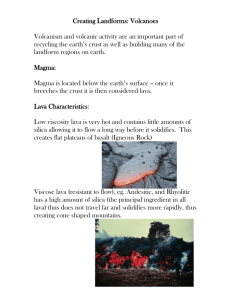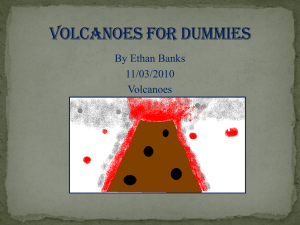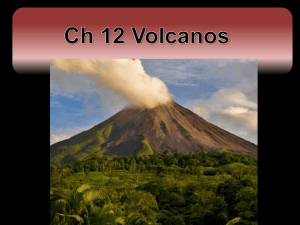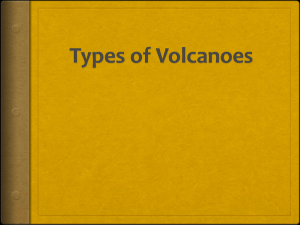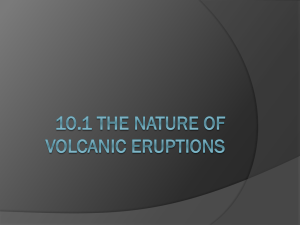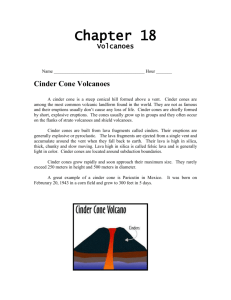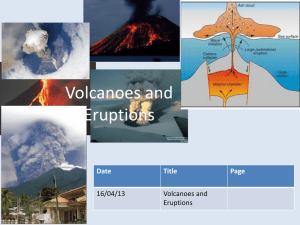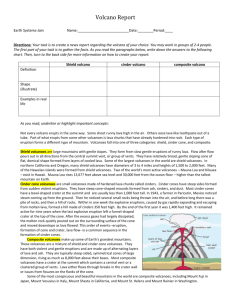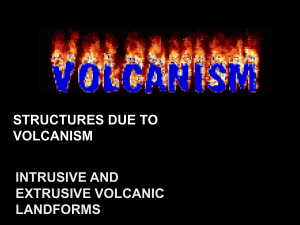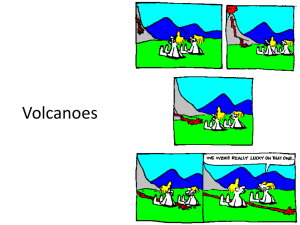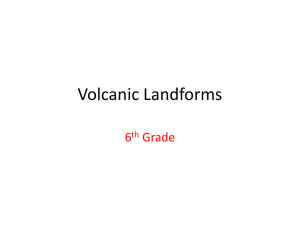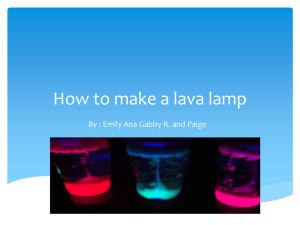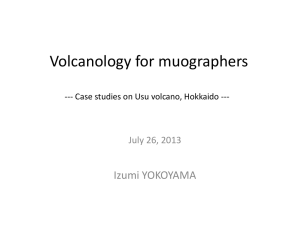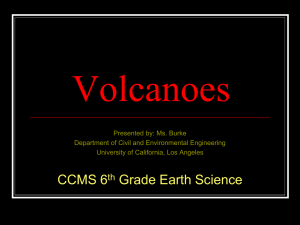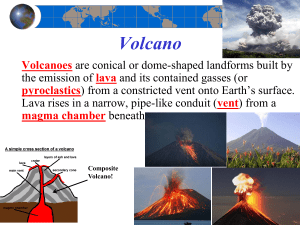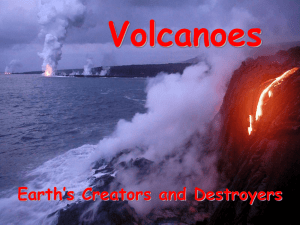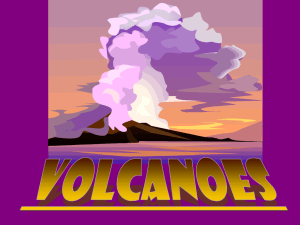Cinder Cone Volcanoes
advertisement
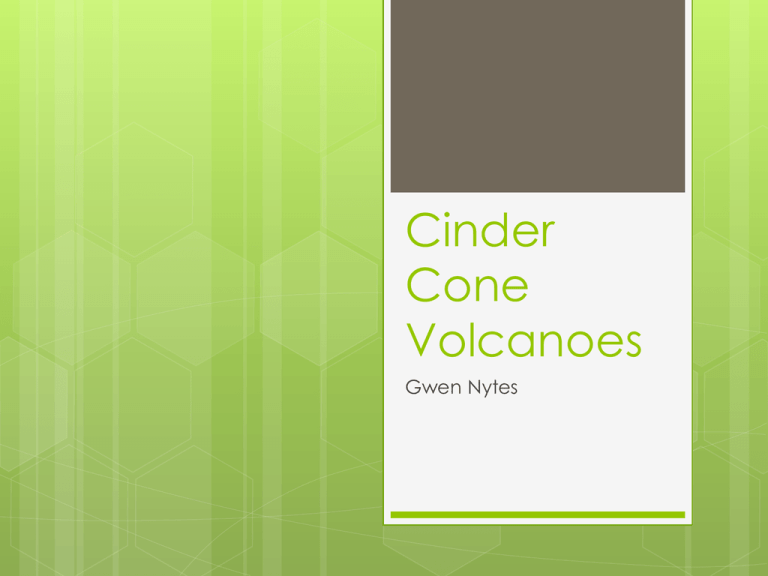
Cinder Cone Volcanoes Gwen Nytes Composition The magma in this type of volcano is made of basaltic-andesitic materials. The magma has an intermediate viscosity, so it’s mildly explosive. It also consists of a lot of gases, so when the lava cools and hardens in the air, gas bubbles get trapped inside. The particles fall back down as cinders, and pile around the vent. Formation • • Cinder cone volcanoes are made from particles and pieces of hardened lava blown out of the volcano’s single vent. Usually cinder cones are formed in this order: • • • Eruption – gas-charged lava explodes from vent Formation of cone and crater – Lava cools and hardens in the air and fall down as cinders. These particles accumulate, building up and forming the dome. The eruptions occurring create a crater at the top Lava flow – When the lava begins to lose its gas content, it oozes down the side of the volcano as a lava flow Structures • • • • Vent – opening at Earth’s surface Pipe – the passageway that the magma rises through during an eruption Crater – depression at the top of the volcano where materials are released Cone – sides of volcano built of solidified lava, ash, and cinders Compare & Contrast Cinder Cone Volcanoes Shield Volcanoes Thin, flowing lava Low silicate content Low gas content Gentle slope Little pyroclastic material Formed by hardened lava flow Mildly explosive Intermediate gas level Intermediate silicate content Layered structure built from pyroclastic deposits Made of ash and cinders Compare & Contrast Cinder Cone Volcanoes Composite Volcanoes Steep near the top, gentler towards the bottom Layers of pyroclastic material and lava flows Magma has high viscosity – explosive High silicate content High gas content Smallest volcano Layered cone of ash and cinders Mildly explosive Intermediate gas content Intermediate silicate content



